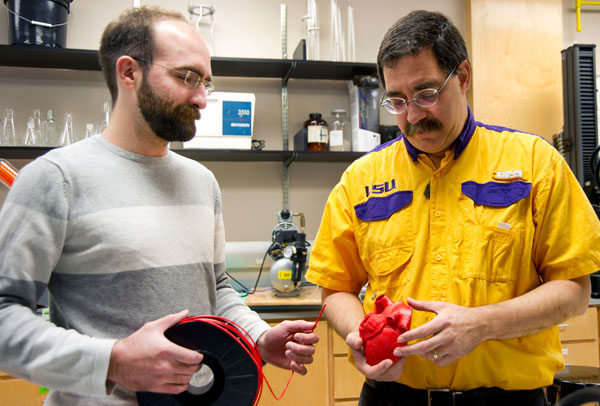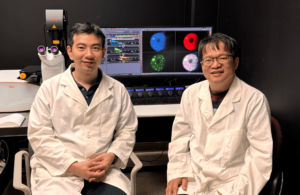- UTRGV Recognized By ED As Among Schools ‘Doing The Most To Lift Students Up’
- Halloween is a Tradition That Dates Back Many Years
- Esteban Cabrera – December 26, 1945 – October 11, 2024
- Ready for District
- Harlingen Opens First Pump Track in South Texas
- ACE Flag Football
- La Feria ISD Hires Chief of Police for District
- Three Ways To Protect Migratory Birds This Fall
- Goodwill and the RGV Vipers Team Up for a Skills Camp
- Santa Rosa ISD Offers Law Enforcement Cadet Program
Added Dimension: UTRGV Chemistry Department Grant will Fund 3D Printers
- Updated: April 15, 2016
by Vicky Brito/UTRGV
RIO GRANDE VALLEY, TEXAS – The University of Texas Rio Grande Valley Chemistry Department will soon own three 3D printers, increasingly important tools in education and research.
UTRGV Assistant Professor Shervin Fatehi and Professor Javier Macossay have secured the “Educate and Inspire” grant from the 3D-printing start-up company New Matter. UTRGV was one of 100 institutions to receive this grant from among 450 applicants.
Fatehi said learning how to work with 3D printers will benefit students and faculty in the chemistry department.
“These machines are being used more in research and in the corporate settings, and we think it is important to have some experience using this kind of machine. Also, it will help make our graduates more valuable as employment prospects,” Fatehi said.

Dr. Shervin Fatehi (at left) and Dr. Javier Macossay examine a 3D-printed heart at their research lab in the Science Building on the UTRGV Edinburg Campus. They recently were awarded a grant from startup company New Matter. Photo: Kristela Garza/UTRGV
The grant will supply three MOD-t 3D printers, 15 spools of filament in a variety of colors, and five packs of replacement print surface plates, to be used to teach techniques for printing molecular models and train students and faculty in the use of 3D design technology.
“The basic principle behind this particular kind of 3D printer is being able to take a computer file that contains a description of the shape of this product and be able to create it,” Fatehi said.
Converting a digital representation of a 3D object into a real-life equivalent object is the basic principle behind all 3D printers, and one of the most interesting things about New Matter’s printers, Fatehi said, is that they aim to provide 3D-printing capability to regular consumers, along with low cost, high-ease use and a curated “app store” for object designs.
Fatehi said UTRGV’s printers will be used to replicate molecular models used in chemistry, and to expand modeling kits already in place that allow students to actually see concepts in chemistry.


